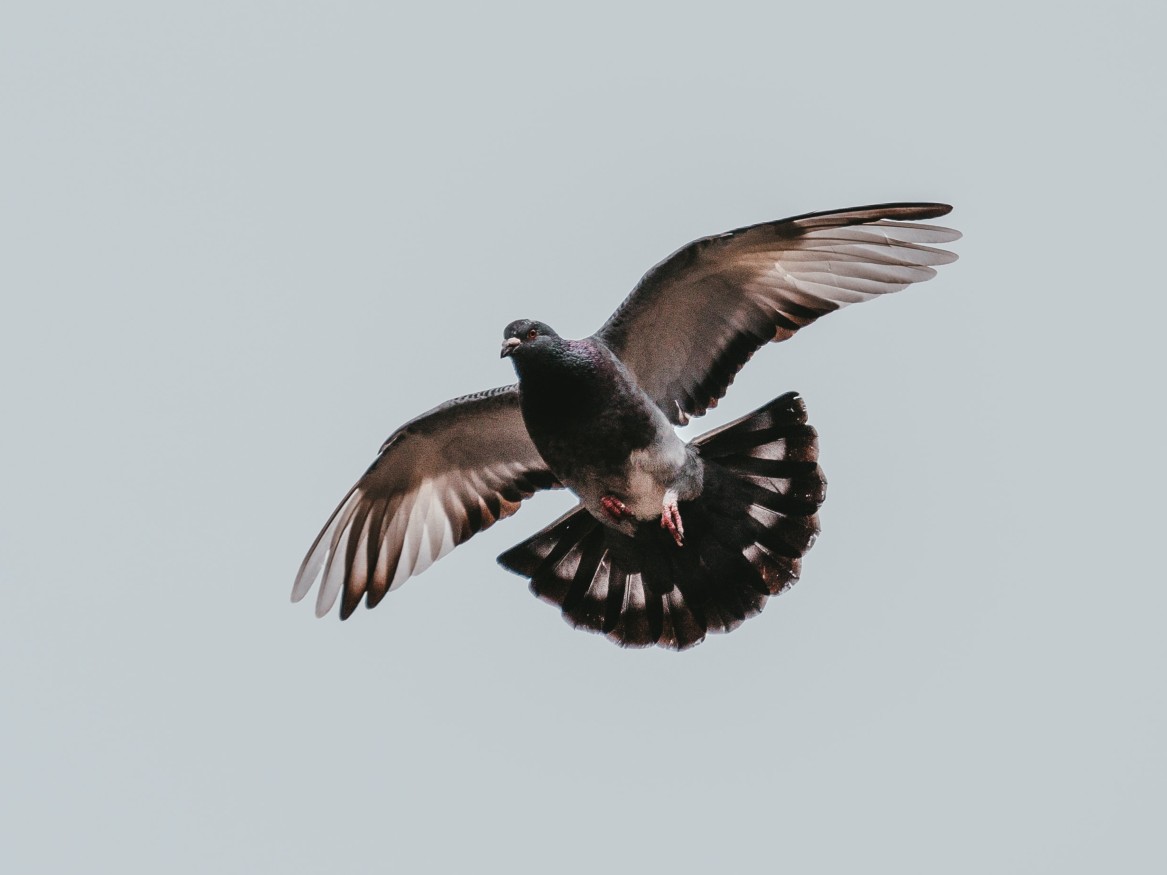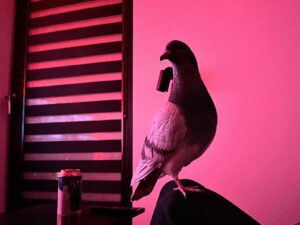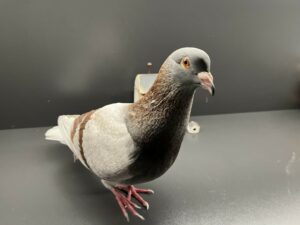Pigeons are fascinating birds known for their ability to fly long distances and find their way home. For centuries, humans have used them for delivering messages and even in racing competitions. These birds have a rich history, serving in wars as messengers and playing a crucial role in communication before the advent of modern technology. Today, we remain intrigued by their impressive flight capabilities and navigation skills. But one question often comes to mind: just how far can a pigeon fly?
Understanding a pigeon’s flight capacity is not just about satisfying our curiosity; it also has practical implications. For instance, pigeon racers and breeders are keenly interested in enhancing the flight performance of their birds. Additionally, studying pigeon flight can offer insights into bird migration and navigation, contributing to broader scientific knowledge. In this article, we will delve into the factors that influence a pigeon’s ability to fly long distances, explore record-breaking pigeon flights, and discuss the physical and ethical limitations of their journey.
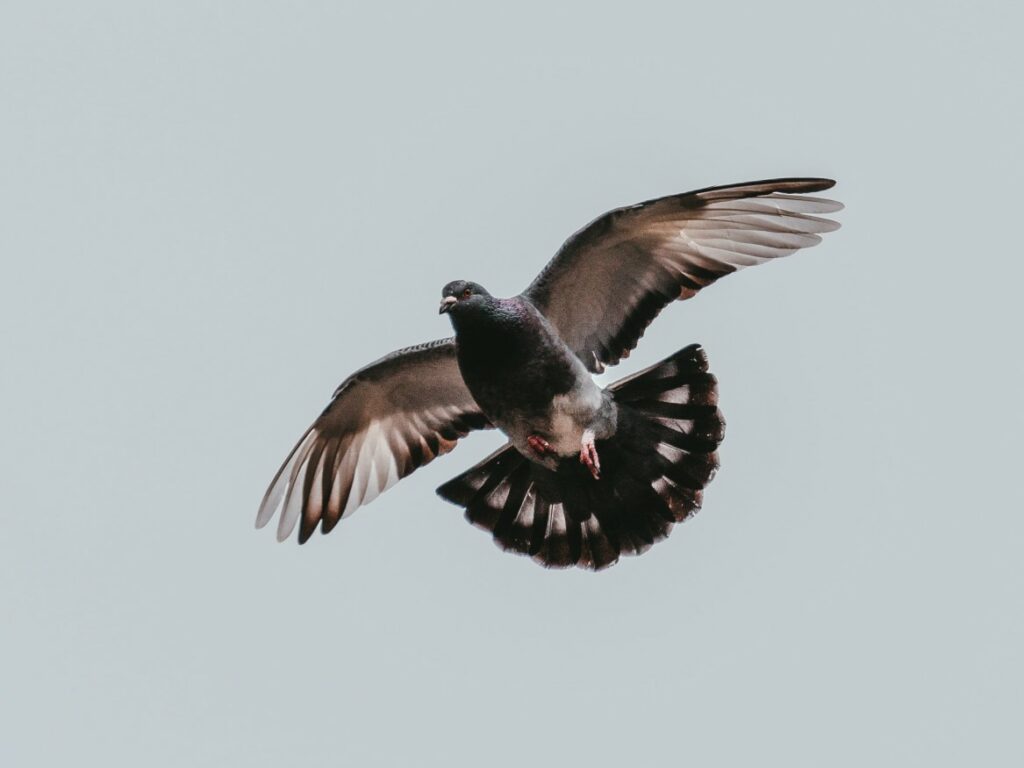
How Far Can a Pigeon Fly? Table of Contents
The Biology Behind Pigeon Flight
Description of Pigeon Anatomy Relevant to Flight
In order to understand how far pigeons can fly, we need to start by looking at their anatomy, specifically the parts that are crucial for flight.
Wing Structure and Muscle Composition: Pigeons have strong, muscular wings that enable them to fly long distances. The primary feathers on the wings are long and provide lift, while the secondary feathers offer stability. The chest muscles, responsible for flapping the wings, are well-developed and make up a significant portion of their body weight. This muscle strength is vital for endurance during long flights.
Respiratory System Adaptations: Pigeons have a unique respiratory system that is highly efficient in supplying oxygen to the muscles during flight. They breathe in a continuous flow of air, which ensures a constant supply of oxygen. This is crucial for maintaining energy levels during long journeys.
Check my article about How Fast Can A Pigeon Fly?
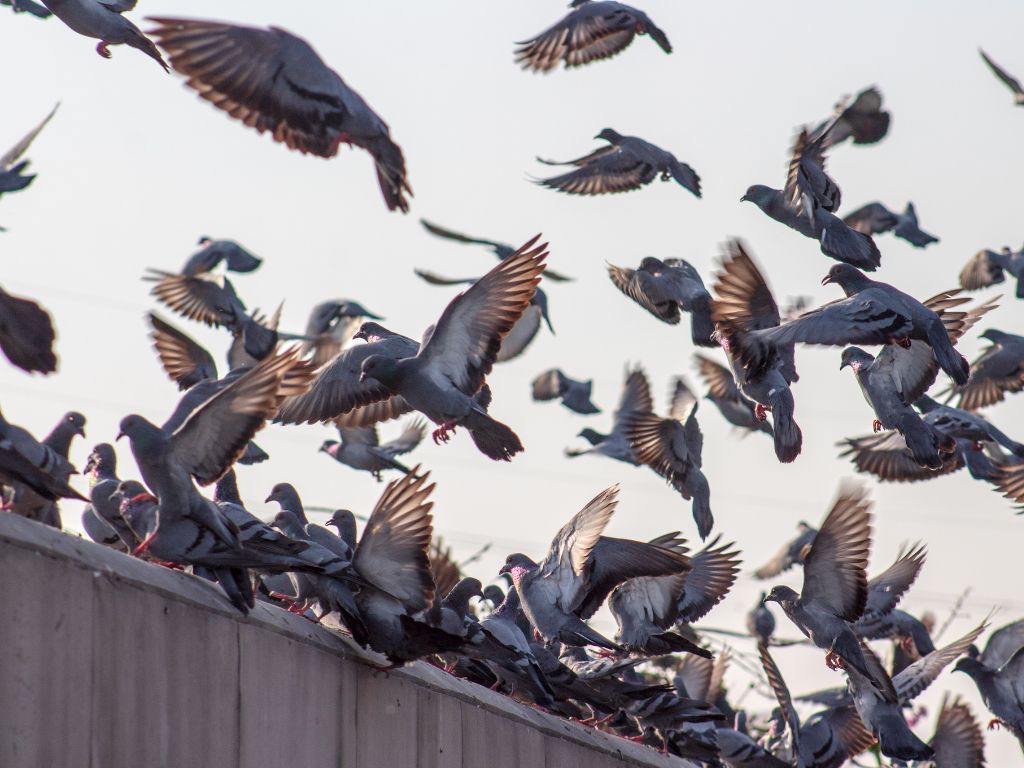
Energy and Stamina: How Pigeons Fuel Their Flights
The ability to fly great distances requires a lot of energy. Pigeons have adapted to meet these energy demands in various ways.
Role of Fat and Carbohydrate Metabolism: Pigeons store fat and carbohydrates in their bodies, which act as energy reserves during flight. When flying, their bodies convert these reserves into energy. Fat provides a more concentrated energy source, which is essential for long-distance flights.
Importance of Food and Water Intake Before Long Flights: Before embarking on a long journey, pigeons ensure they are well-fed and hydrated. Eating plenty of food helps them build up their energy reserves, while drinking water helps maintain hydration levels. Proper nutrition and hydration are crucial for endurance and performance.
Navigation and Orientation Skills
Pigeons are renowned for their navigation and orientation skills, which are vital for finding their way over long distances.
Pigeons’ Innate Sense of Direction and Ability to Use Environmental Cues: Pigeons have an innate sense of direction that helps them navigate. They are able to use various environmental cues, such as the position of the sun, the Earth’s magnetic field, and visual landmarks, to guide them on their journey.
Role of Magnetoreception and Sun Compass in Navigation: Pigeons possess a sense of magnetoreception, allowing them to detect the Earth’s magnetic field and use it for navigation. Additionally, they use the sun as a compass, adjusting their flight direction based on the time of day. These navigation tools are crucial for pigeons, especially when flying long distances across unfamiliar territory.
In summary, the biology behind pigeon flight is complex and fascinating. Their anatomy is perfectly adapted for long-distance travel, with strong muscles and an efficient respiratory system. They have the ability to store and efficiently use energy, and their navigation skills are unparalleled in the animal kingdom. All these factors work together to allow pigeons to fly extraordinarily long distances.
Check my article about Do Pigeons Fly At Night?
How Far Can a Pigeon Fly? Factors Influencing Flight Distance
In this section, we will discuss the various factors that play a crucial role in determining how far a pigeon can fly. These factors range from environmental conditions and physical health to human intervention and training.
Environmental Factors
The environment has a significant impact on a pigeon’s flight, and it’s important to understand these influences:
Impact of Weather Conditions:
- Wind: Wind can either help or hinder a pigeon’s flight. Tailwinds (winds blowing in the same direction as the flight) can significantly boost the bird’s speed and distance covered, while headwinds (winds blowing against the flight direction) can make flying more challenging and reduce the distance covered.
- Temperature: Extreme temperatures, either too hot or too cold, can affect a pigeon’s endurance. Moderate temperatures are ideal for long flights.
- Precipitation: Rain can make flying difficult, adding extra weight to the pigeon’s body and reducing visibility.
Topographical Challenges:
- Mountains: Flying over mountains requires extra energy due to the higher altitude and potential for updrafts and downdrafts.
- Water Bodies: Crossing large bodies of water is challenging as there are no resting spots, and it requires continuous flight.
Physical and Health Conditions
The physical health of a pigeon is crucial in determining its flight capacity:
Age and Fitness Level:
- Younger pigeons may not have the same endurance as mature pigeons.
- A pigeon’s fitness level, determined by regular exercise and a healthy diet, plays a vital role in its flight capability.
Prevalence of Diseases and Parasites:
- Diseases and parasites can weaken a pigeon, reducing its stamina and ability to fly long distances.
- Regular health check-ups and proper care can help in maintaining the pigeon’s health.
Human Intervention and Training
Humans play a significant role in enhancing a pigeon’s ability to fly long distances:
Breeding Practices for Endurance and Navigation Skills:
- Selective breeding can enhance specific traits in pigeons, such as endurance and navigation skills, which are crucial for long flights.
- Breeders often look for pigeons with a proven track record of long-distance flights for breeding.
Training Routines to Enhance Flight Capacity:
- Regular training helps in building a pigeon’s stamina and improves its navigation skills.
- Training routines may include gradually increasing the distance of flights and practicing in different environmental conditions to prepare the pigeons for various challenges.
In conclusion, a pigeon’s flight distance is influenced by a combination of environmental factors, physical and health conditions, and human intervention. By understanding and optimizing these factors, it is possible to enhance the flight capacity of pigeons and ensure their well-being during long flights.
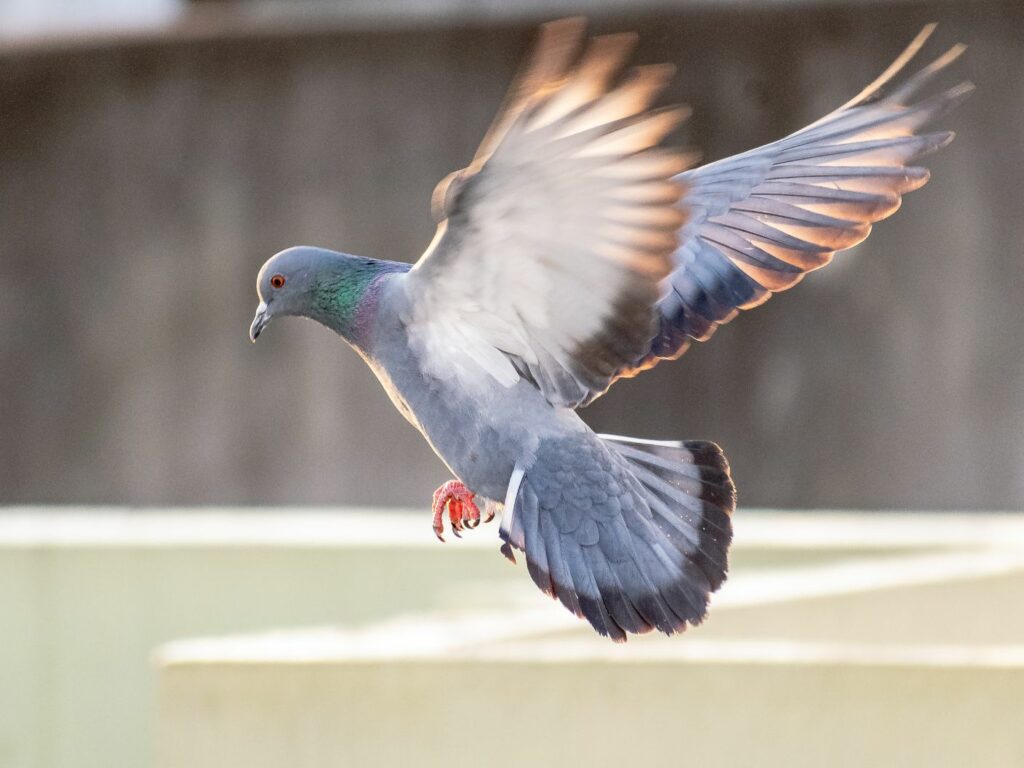
How Far Can a Pigeon Fly? Record-Breaking Pigeon Flights
Pigeons have a long and storied history of making incredible journeys across vast distances. In this section, we will delve into some of the most impressive feats of pigeon flight, both from historical records and modern times, as well as gain insights from the world of pigeon racing and homing competitions.
Historical Accounts of Long-Distance Pigeon Flights
Historically, pigeons have been used as messengers and played crucial roles in various events. For example, during wars, pigeons carried important messages across enemy lines, traveling hundreds of miles to deliver critical information. These journeys were fraught with danger, but the pigeons’ strong sense of direction and determination often saw them through. There are also accounts of pigeons being used by sailors to send messages back to land, showcasing their ability to navigate over long distances and across challenging terrains.
Modern Examples and Notable Achievements
In more recent times, pigeons continue to amaze us with their flight capabilities. There are pigeons that have been recorded to fly over a thousand miles in pigeon racing competitions, demonstrating not just their physical endurance but also their incredible navigation skills. Some of these pigeons have even achieved celebrity status and have been sold for large sums of money to breeders looking to produce the next champion flyer.
Insights from Pigeon Racing and Homing Competitions
Pigeon racing and homing competitions provide a structured environment to study and appreciate the flight capabilities of pigeons. In these events, pigeons are trained and then released at a specific location, with the goal of returning home as quickly as possible. The distances can vary, with some races covering hundreds or even over a thousand miles. Through these competitions, we’ve learned a lot about what pigeons are capable of, including how fast they can fly, how far they can go, and how they navigate such long distances. Additionally, the breeding and training practices refined in these competitions have helped in enhancing the overall capabilities of pigeons, contributing to the record-breaking flights we see today.
In summary, from historical feats of endurance to modern-day pigeon racing, these birds have consistently shown an incredible ability to fly long distances. Their journeys provide us with valuable insights into their biology and capabilities, showcasing the remarkable endurance and navigation skills of pigeons.
Check my article about Do Pigeons Fly South For The Winter?
Limitations and Ethical Considerations
While pigeons have impressive flying capabilities, it’s important to acknowledge that there are physical limits and ethical considerations to take into account when it comes to their long-distance flights.
Physical Limits to How Far a Pigeon Can Fly Without Rest
Pigeons, like all living creatures, have physical boundaries. Their bodies can only store a limited amount of energy, and extended flights require substantial stamina and resources. Pigeons need to rest, eat, and drink, especially during exceptionally long journeys. Without adequate rest and nourishment, they risk exhaustion and potentially fatal consequences. Recognizing these physical limits is crucial for ensuring the well-being of the pigeons.
Ethical Considerations in Using Pigeons for Long-Distance Flights
The use of pigeons for long-distance flights, whether in racing or as messengers, raises several ethical concerns. Ensuring the pigeons’ safety and well-being should always be the top priority. This includes providing proper training, nutrition, and care, as well as making ethical decisions about the distances they are expected to fly, especially in adverse weather conditions or across challenging terrains. Additionally, the potential for exploitation in pigeon racing, where significant amounts of money can be involved, must be addressed to ensure fair and humane treatment of the birds.
The Role of Technology and Alternatives to Pigeon Flights
In today’s digital age, the role of pigeons in long-distance communication has been largely supplanted by technology. From telephones to the internet, we have a plethora of faster and more reliable means of communication. Even in the realm of racing and sport, technology can offer alternatives or enhancements, such as GPS tracking to monitor the pigeons’ journeys and ensure their safety. Exploring and embracing these technological alternatives can help reduce the reliance on pigeon flights, particularly in situations where the birds’ safety and well-being could be at risk.
In conclusion, while pigeons have incredible flying capabilities, it is our responsibility to recognize their physical limits and ensure ethical treatment in all circumstances. Embracing technology and seeking alternatives can also play a role in safeguarding these remarkable birds while still appreciating and learning from their natural abilities.

Final Thoughts
Throughout this article, we have explored the remarkable world of pigeons and their extraordinary ability to fly long distances. From understanding the intricate details of their biology and anatomy that empower their flights, to marveling at the record-breaking journeys they have made, it’s clear that pigeons are incredible creatures.
We’ve also delved into the various factors that influence their flight capabilities, including environmental conditions, their physical and health status, as well as the training and breeding practices employed by humans. Each of these elements plays a crucial role in determining how far a pigeon can fly, showcasing the delicate balance between their natural instincts and the external factors that impact their journeys.
However, it’s important to remember that pigeons, despite their resilience and strength, have their limits. Their well-being should always be at the forefront, and ethical considerations must guide our interactions with them, especially when it comes to long-distance flights. We must be mindful of their needs, respect their capabilities, and ensure their safety at all times.
In the end, pigeons are not just remarkable flyers; they are a testament to the wonders of nature and the incredible feats that can be achieved with strength, determination, and a little bit of guidance. As we continue to learn from and marvel at these extraordinary birds, let’s also commit to protecting them and appreciating the incredible journey they take us on.
How Far Can a Pigeon Fly? FAQs
What factors influence how far a pigeon can fly?
Several factors influence a pigeon’s flight distance, including environmental conditions like wind and weather, the bird’s physical health and age, as well as training and breeding practices.
How do pigeons navigate during long flights?
Pigeons have an innate sense of direction and use various environmental cues for navigation, including the Earth’s magnetic field, the position of the sun, and visual landmarks.
Can pigeons fly long distances without rest?
Pigeons have impressive endurance but they do have physical limits and need to rest, eat, and drink, especially during extremely long journeys.
What are some record-breaking pigeon flights?
There are accounts of pigeons flying over a thousand miles in pigeon racing competitions, demonstrating extraordinary endurance and navigation skills.
How do pigeons’ bodies fuel their long flights?
Pigeons store fat and carbohydrates in their bodies, which are converted into energy during flight. They also need to intake ample food and water before embarking on long journeys.
What role does human intervention play in pigeon flights?
Humans can enhance a pigeon’s flight capabilities through selective breeding, training routines, and ensuring proper care and nutrition.
What ethical considerations should be taken into account when using pigeons for long-distance flights?
Ensuring the pigeons’ safety, well-being, and humane treatment should be the top priority, particularly in activities like pigeon racing where they are expected to fly long distances.
How have pigeons been used historically?
Historically, pigeons have been used as messengers, carrying important messages across long distances, even during times of war.
What are the physical adaptations of pigeons that aid in flight?
Pigeons have strong, muscular wings, a high number of primary feathers for lift, and a unique respiratory system that supplies a constant flow of oxygen to their muscles during flight.
Are there technological alternatives to using pigeons for long-distance communication?
Yes, modern technology provides faster and more reliable means of communication, reducing the need to use pigeons for long-distance message delivery.

